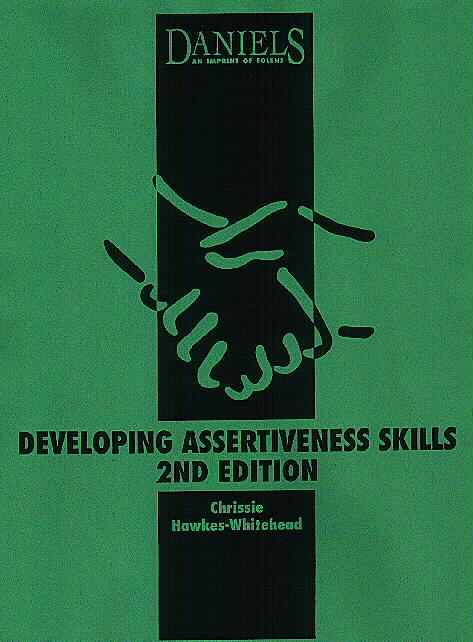 by Chrissie Hawkes-Whitehead
by Chrissie Hawkes-Whitehead
This second edition emphasizes that assertiveness is concerned with bringing about outcomes which are acceptable to all parties in an interaction. It offers clarification of assertive behavior and practical exercises to develop assertiveness.
Full Description:
Many people confuse assertiveness with aggressive behaviour.
Developing Assertivess Skills 2nd Edition emphasizes that assertiveness is concerned with bringing about outcomes which are acceptable to all parties in an interaction. It offers clarification of assertive behaviour and practical exercises to develop assertiveness.
- Activities encourage development of self-esteem and gaining personal confidence. Offers strategies for saying "NO".
- Exercises explore the difference between assertiveness, aggressive and passive behaviour.
- Excellent for helping to develop questioning and listening strategies. Also, discusses rights and responsibilities.
Sample Activity Use this exercise towards the end of a course, and/or if the group members know each other well.
Aim: To encourage participants to gain more understanding of their perception of themselves and others.
Materials required: Large sheets of paper and pens
Approximate time:1 hour
Activity: - Give each person a sheet of paper and some pens. Ask them to find some space and to draw a picture of themselves. Explain that they need not to worry about it not being 'perfect' or an 'accurate' reflection. Also explain that it is not a competition. When they have drawn their picture ask them to write down five things on the paper which they feel describe themselves.
- They may ask at this point if the things they write down should be positive or negative. Tell them to just write down how they would describe themselves whatever. Be careful not to lead them into either positive or negative at this stage.
- When they have done this, ask the participants to get into pairs and discuss their pictures and the words they have used to describe themselves. Ask them to look particularly at things like:
- -How much paper has been used for their drawing? Does it fill the whole piece of paper or does it take up only a small part?
- -Which words or phases have people used to describe themselves? Are they positive or negative?
- Encourage participants to draw their own conclusions about their pictures and do not try to make any deep psychological interpretations of them yourself.
- Explain that part of being assertive is to value both themselves and others. On way of doing this is to affirm their own positive qualities and to be able to do that for other people in honest genuine ways. The next part of the exercise will give participants an opportunity to do this.
- Ask participants to put their pictures on the wall, floor or tables. Then ask everyone to write one positive quality they like about each person on the person's picture.
- End the exercise by asking the particpants how they feel about what has been written by other people on their picture and whether it is a surprise to them in any way.
91 photocopiable masters; 11 X 12 hard cover ring binder
Planning a course:- -Aims
- -How are you going to start?
- -How are you going to plan your sessions?>DT>-Publicity checklist
- Sample programs
- -Example 1: An eight-session course
- -Example 2: A weekend course
- -Example 3: An introductory 1-hor session
- -Timings
- Running a course
- -Expectations and concrens
- -What is assertivness
- -I am assertive!!
- -Identifying assertive, aggressive and passive thought and behavior patterns
- -What stops us from being assertive?
- -'Blocks' to assertivness
- -Rights and responsiblities
- -Time management
- -Saying 'NO'
- -Dealing with criticism
- -Separating 'you' from what you 'do'
- -Self-confidence and self-esteem
- -Body language/non-verbal communication
- -managing change and assertivness
- -Evaluation
- Useful Resources
- -Training opportunities in assertiveness
|